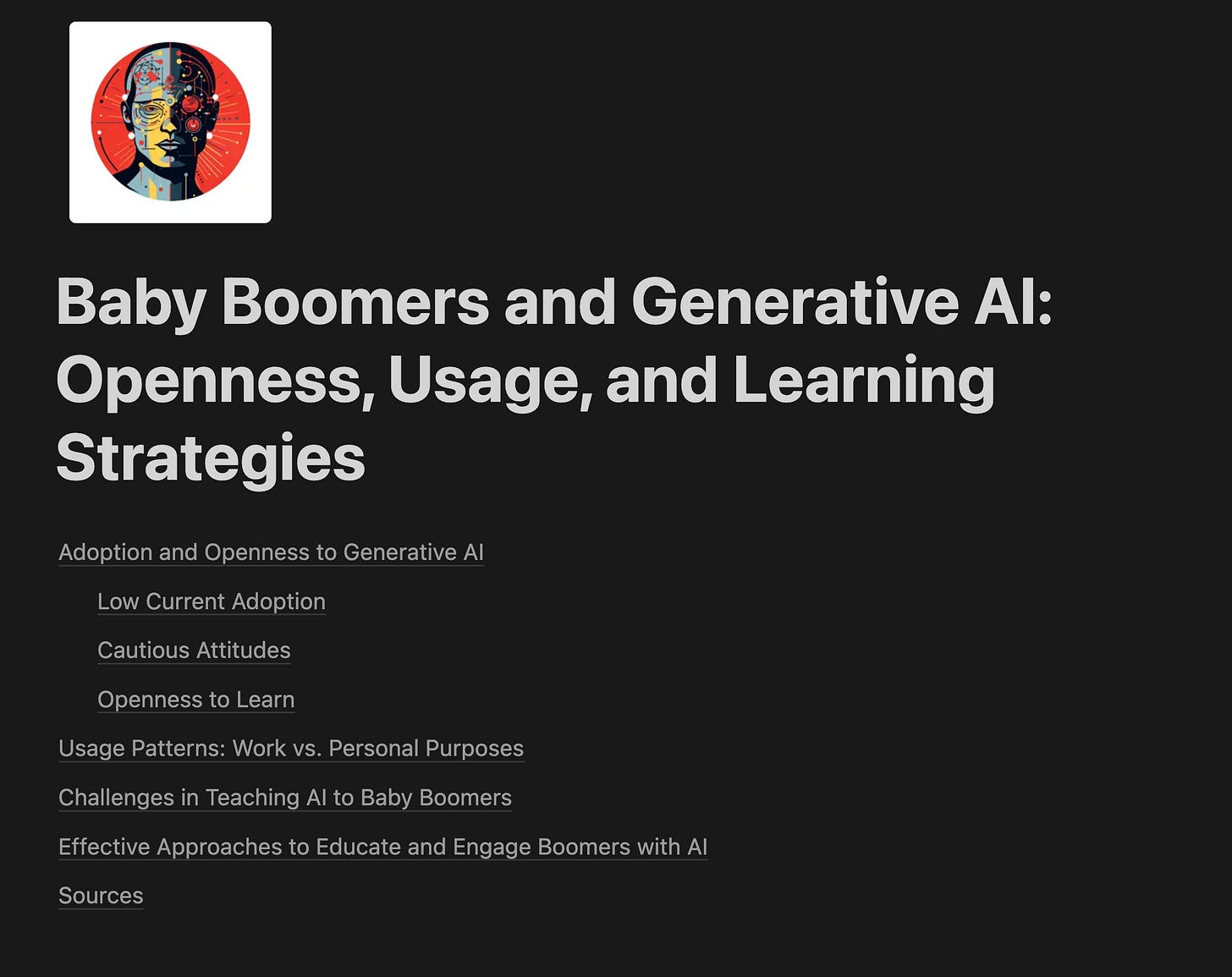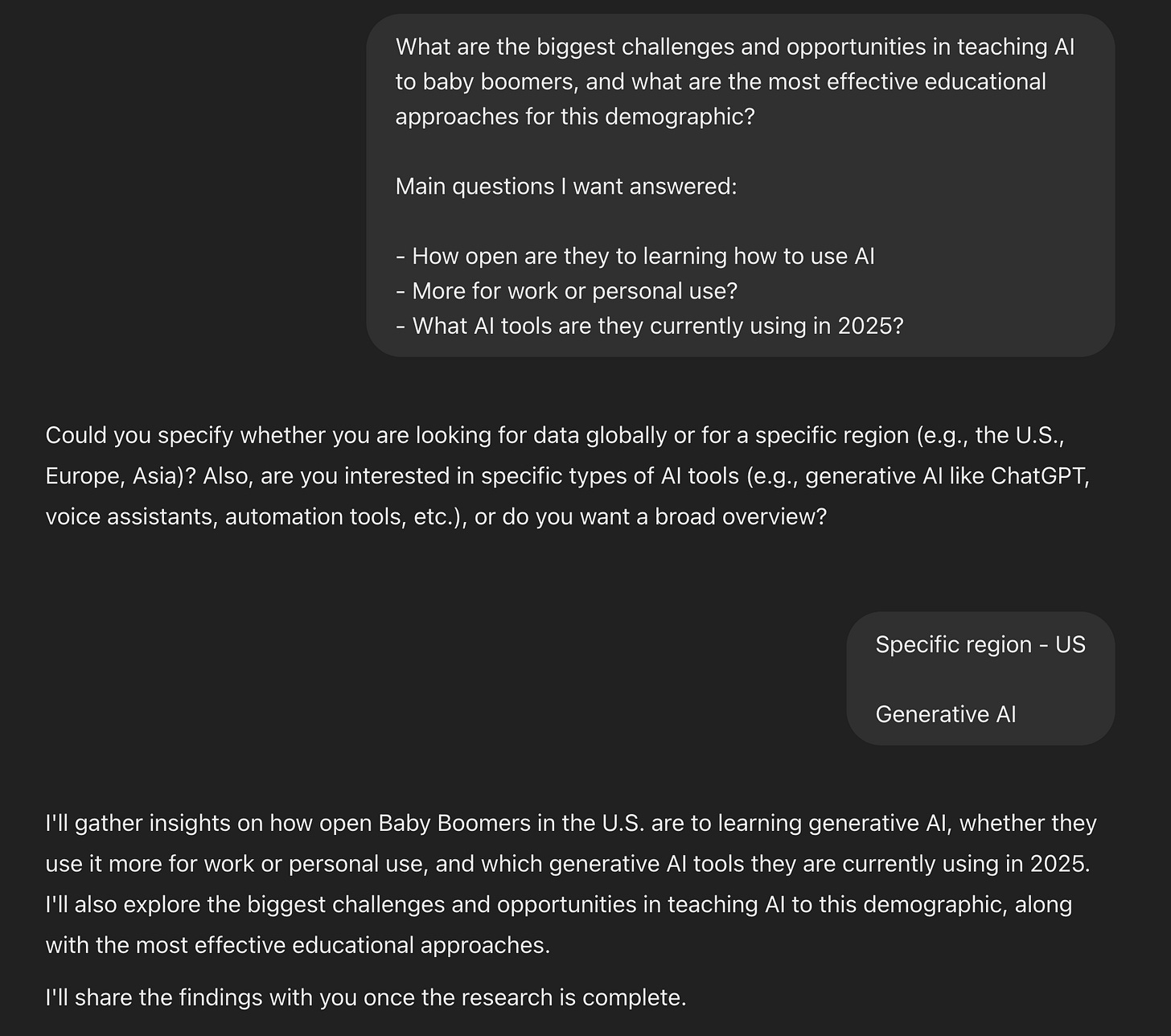When OpenAI dropped their deep research feature, I immediately saw an opportunity to answer a question that had been in my head for months: How are baby boomers really engaging with AI tools?
While everyone else is manually piecing together market insights from scattered sources, this AI agent processes and analyzes dozens of sources in minutes.
That question about baby boomers and AI? Deep research analyzed 23 sources in 5 minutes and delivered several insights.
At the end of this edition, paid subscribers will find access to the full report on my Notion page. The report, “"Baby Boomers and Generative AI: Openness, Usage, and Learning Strategies" has been formatted, edited and supplemented with visuals.
If you are a free member of our community, consider becoming a paid member for access to this report and others in the near future.
Setting up your research for success
The secret to getting amazing results is in how you structure your research.
Many of you might be tempted to jump in with vague queries.
Start with a clear, focused research query. In my case, I wanted to understand "What are the biggest challenges and opportunities in teaching AI to baby boomers, and what are the most effective educational approaches for this demographic?"
You can also break this down into specific questions you want answered:
How open are they to learning AI?
Are they more interested in work or personal use?
What tools are they currently using?
When ChatGPT asks follow-up questions (and it will), treat them as opportunities to refine your research. When it asked me about region and AI type, I specified US market and generative AI. This focus is crucial - it's the difference between getting generic information and actionable insights.
The real-time analysis process
Once you start the research, ChatGPT doesn't just gather information - it shows you its entire thought process in real-time. Think of it like having a research assistant who thinks out loud.
In my example, I watched as it:
Found recent surveys about generative AI adoption
Discovered data points about boomer engagement
Cross-referenced multiple sources to verify trends
Identified patterns in usage and learning preferences
Pro tip: Pay attention to how ChatGPT handles contradicting information. When it found data suggesting both low and high AI adoption rates among boomers, it didn't just pick one - it dug deeper.
Every source it cites is clickable, letting you verify information and dive deeper into anything that catches your interest.
Making sense of the results
The initial results of my research showed that 68% of boomers aren't using generative AI. But digging deeper revealed something interesting: It wasn't lack of interest holding them back - it was a knowledge gap.
Here's my process for turning research into actual insights:
Cross-check the sources: Deep research gives you clickable citations for everything. Use them. I found that combining industry surveys with real user stories gave me a much richer understanding of boomer AI adoption.
Look for patterns, not just facts: When the report showed that 13-15% of older workers use AI at work, I connected this with other data points about self-taught learning. This revealed an opportunity: boomers are willing to learn AI when they see clear workplace benefits.
Challenge your assumptions: The research showed that it's about relevance and practical application, not age.












